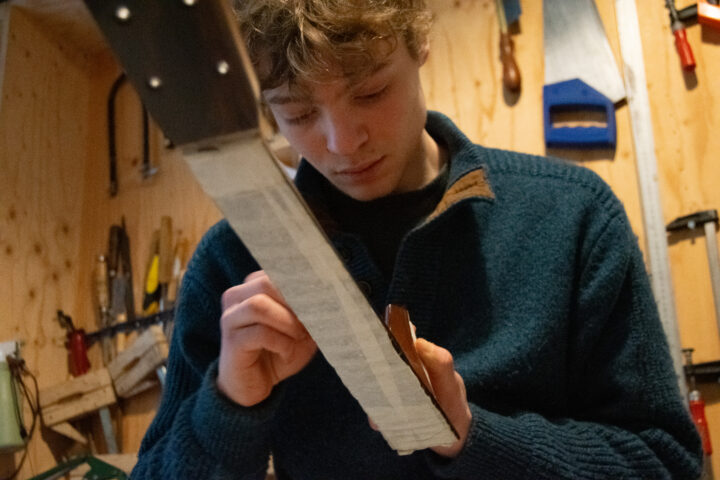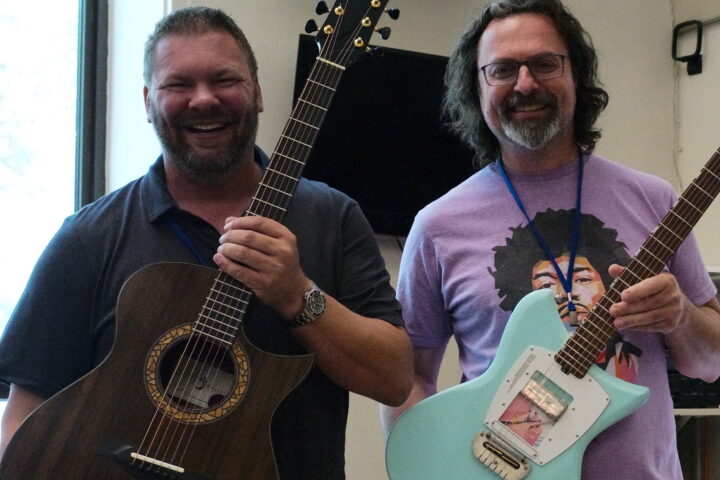OK, I admit that I’m a curmudgeon. I walked into the Healdsburg Guitar Festival, now held in beautiful Santa Rosa, California, saw all of those gorgeous guitars with wide, spalted rosettes, bevels, side ports, and wood bindings, and immediately resolved to wander the room to play every guitar sporting a sunburst finish and/or ivoroid binding. Really. But, then, juvenile point (not) made, I went back through the work of the 120 plus exhibitors and played every guitar that I could get my hands on. Again, really. It took me the better part of two and a half days and I can honestly say that I didn’t meet a guitar I didn’t like. The standard of craft is astonishing. Row after row of perfectly built, beautifully decorated, and wonderfully playable guitars. Fingerstyle flattops ruled the roost, but there were a few dreadnoughts and classicals, more than a score of archtops, an impressive number of ukuleles, a couple of harp guitars, and some solid body electrics. In short, just about anything a guitar player’s heart might desire.
At Healdsburg, you can walk in, grab a guitar and a chair, and sit down to pick for a while. You can check the playability and inspect the flawlessly executed craft. But, you can’t hear the things, despite the rising popularity of side ports. You see, several thousand people will also be playing guitars, chatting, and generally making acoustic whoopee in the same room. Of course, the organizers — Luthiers’ Mercantile, who did a brilliant job with the Festival — had a solution: there were quiet and semi-quiet spots throughout the venue for really listening to a guitar.
The luthiers were all thrilled to have players stop to check their craft. All were very helpful in pointing out the features of an instrument, and, thankfully, only a few were too willing, telling folks, “this one has huge voice,” “one of the best guitars I’ve ever made,” or, “this is one sweet box.” These were, on balance, a humble group of artisans. Most of these folks were more likely to praise the work of their colleagues than to tout their own.
Again, I didn’t meet a guitar that I didn’t like. What I offer here are a few of my favorites. I don’t claim that these are the best in show or, certainly, that I’m qualified to make such a list. But, these are guitars that struck my fancy. I’ve endeavored to select the plain and the fancy, the work of the well known and the unknown, and the expected and surprising. So, my inadequacies and biases disclosed, here are my picks of a few of my favorites on which I picked.
Franklin and McAlister “mini-Smecks.” History tends to repeat itself. Just as Newton and Leibnitz simultaneously but independently invented calculus, Nick Kukich (of the Franklin Guitar Company) and Roy McAlister simultaneously experienced a eureka moment when it dawned on them that the Gibson Roy Smeck design is a winner in tone but not, for some, in playing comfort. The Smeck is Gibson’s 1930s slope shoulder, 12-fret, dreadnought, signature model designed for the “Wizard of the Strings” for lap style play. As Jackson Browne can tell you, when converted for “Spanish” style play, they are unsurpassed fingerpicking guitars. But, at 16 inches wide and extra deep, they aren’t the sort of guitars most of us would like to curl up with on the couch. Enter these gents who built slightly smaller 12 (Kukich) and 13 (McAlister) fret mahogany and red spruce, sunburst beauties. Both of these brilliant creations were stunning in visuals, tone, and playability. I’ve seen the future and it is rooted in the past (and brilliant craft).
Circa 00 cutaway. Another traditionally styled guitar, this 12 fretter from John Slobod is an early 1930s Martin reincarnated with subtle cutaway and slightly more modern feeling neck. With beautiful macassar ebony back and sides, perfect European spruce top and, surprisingly, a flame maple neck, this guitar is also breathtakingly beautiful. Light, responsive, and, well, perfect.
Bowerman OM. A subtle stunner by Jayson Bowerman, who worked for a number of years for Breedlove. The back and sides are walnut and the top is from my favorite piece of wood in the show. “Loggers call logs that lay on the forest floor for years ‘buckskins,'” said Bowerman, “because the mineral deposits that they take on turn them that dark, brown color.” Bowerman beautifully paired the “Buckskin redwood” top with simple binding and rosette. Bright, articulate, and responsive. A great little guitar.
AJ Lucas fingerstyle guitar. Every detail of this guitar is, to my eyes, gorgeous. A lovely cutaway that produces an 18th fret neck/body join and subtle and sophisticated visual details throughout. The yew sides, yew back with wenge centerpiece, and European spruce top produce the most visually stunning guitar in the show. A big and warm yet clear sounding guitar that balances perfectly in the lap.
Klepper 16 multi scale. “Just pretend that the frets are normal,” Howard Klepper advises me when I sit down to try this 24.75/25.5 scale wonder with pernambuco back and sides and European spruce top. The slightly toned top was one of the prettiest spruce tops in the show. The craft is jaw dropping. The neck is of perfect width and mass for my hands. A great, articulate voice, too. Plus, those crazy frets do work on this guitar.
Kostal OM. A friend snagged this guitar before it got to Healdsburg. Lucky guy! Gorgeous, aesthetically adventuresome, and great sounding. It sports the finest set of koa for its back and sides that I’ve seen in years and a lovely European spruce top. Michael Watts of The North American Guitar put this guitar through its paces while doing a demo concert for Jason Kostal. As Michael later put it to me after the demo, this beauty “is truly spectacular.”
How 1920s Stella copy. This simple, lovely John How creation was the only ladder braced guitar that I encountered in Healdsburg. Even How’s two other offerings were X-braced. This is just the perfect 1920s-styled blues guitar. Those who haven’t played an original 1920s, Oscar Schmidt made Stella or Sovereign often confuse these lightly built, responsive creatures with the more heavily braced, inexpensive, and dead-sounding ladder braced guitars of the 1940s and 1950s. But, like the guitars that inspired it, this maple and red spruce beauty is loud, bold, and just plain fun to play and hear.
These were but a handful of the great guitars that I played. And, most certainly, there were many other equally fine guitars on display. But, these tickled my eyes, ears, and fingers.
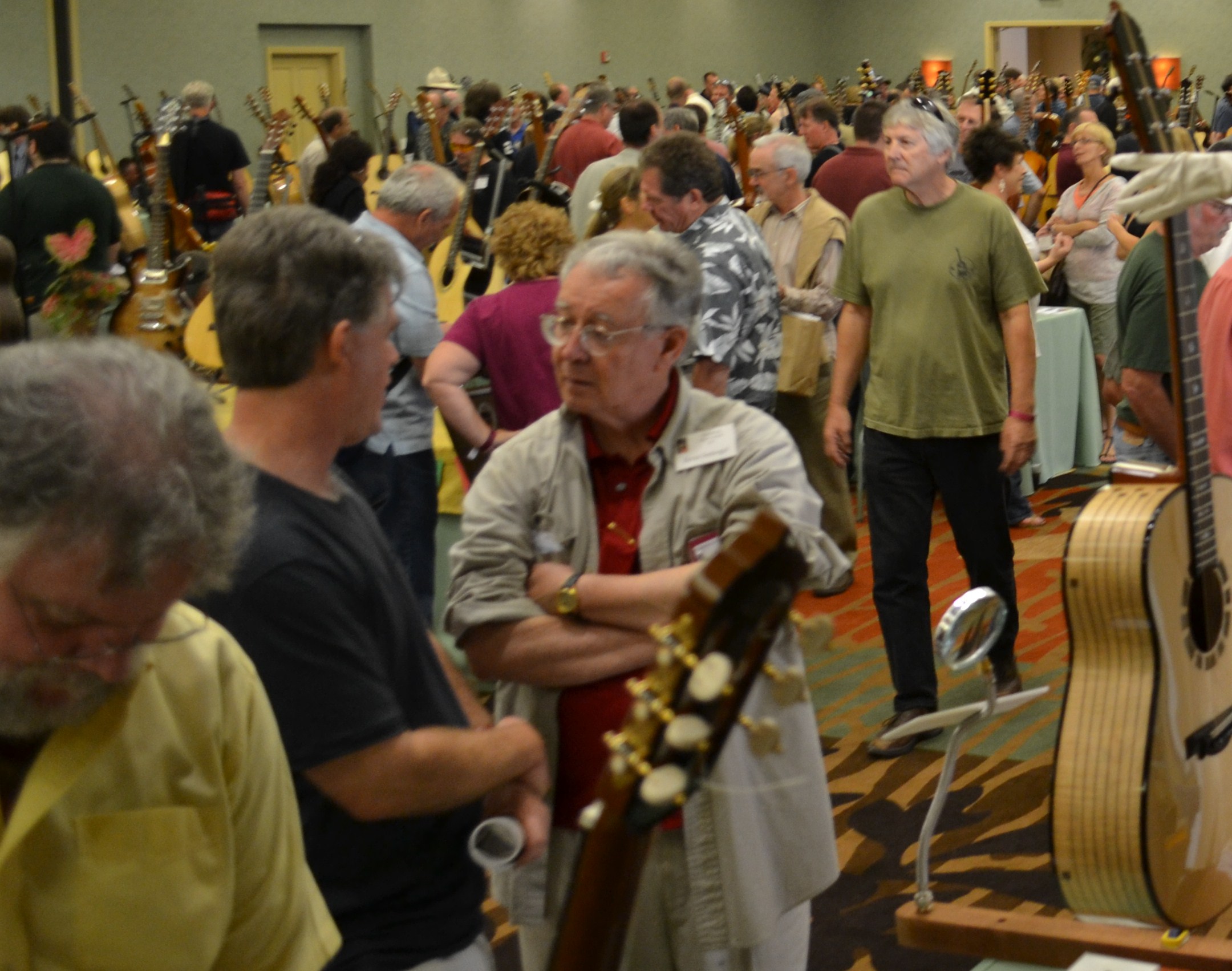
Kostal
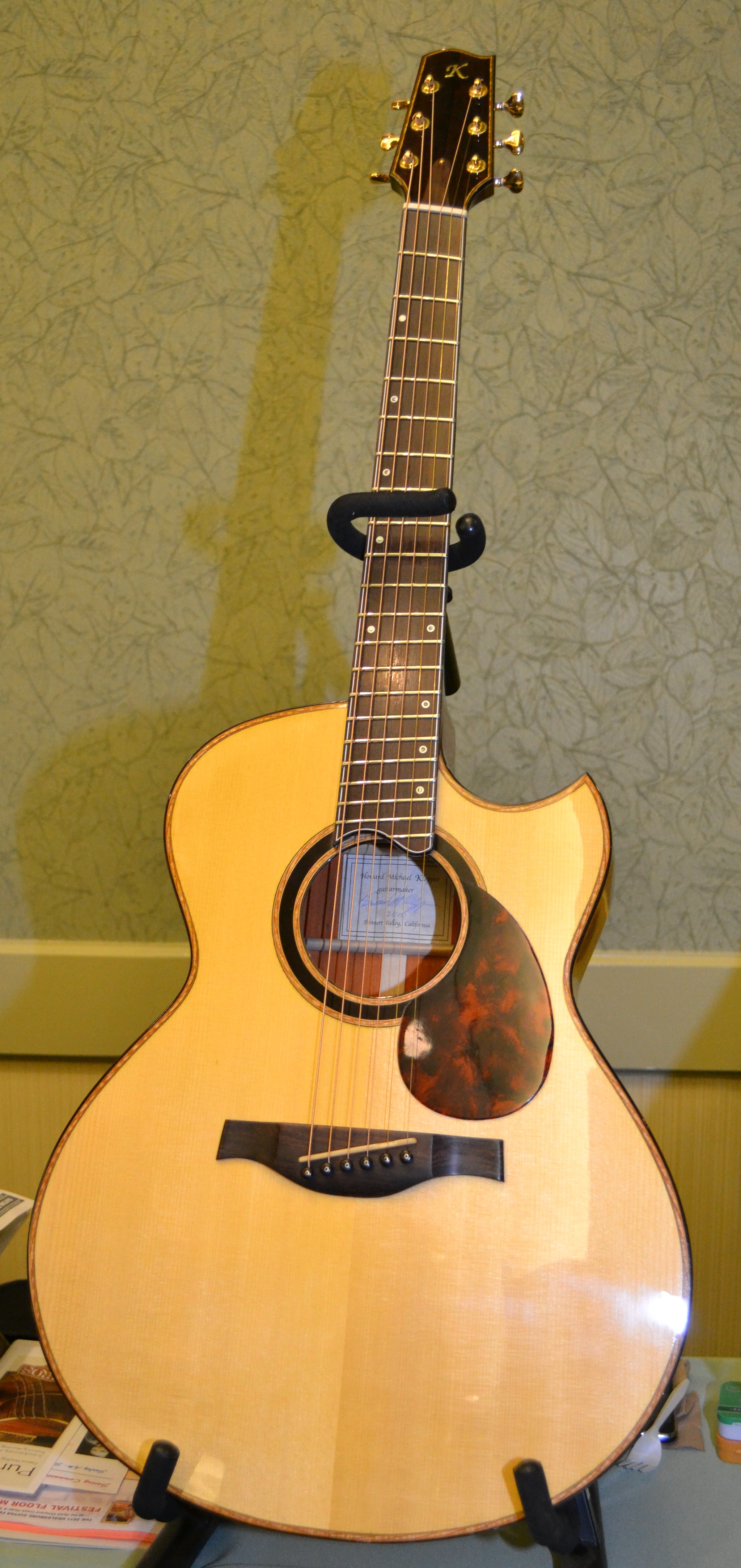
Klepper

AJ Lucas
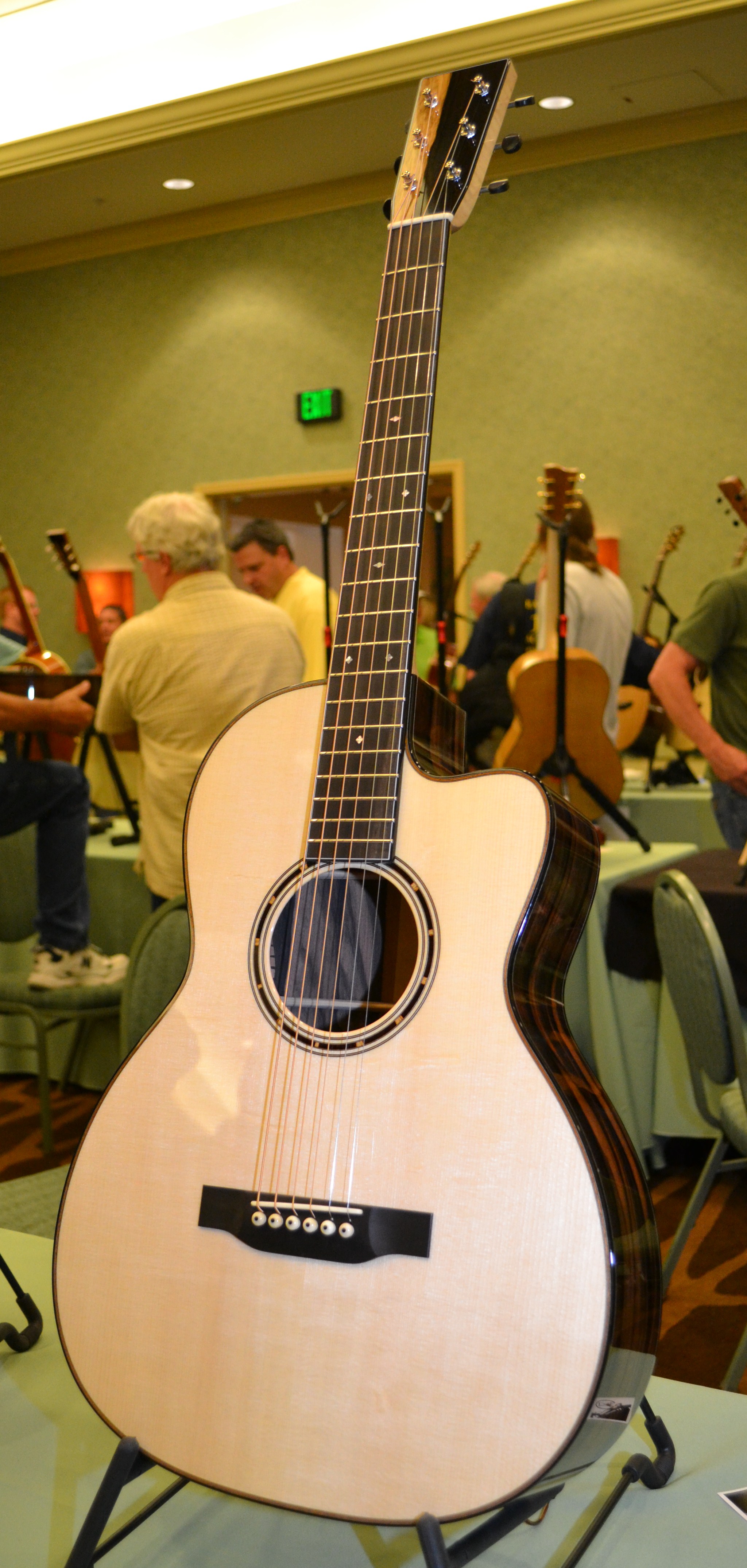
Circa 00
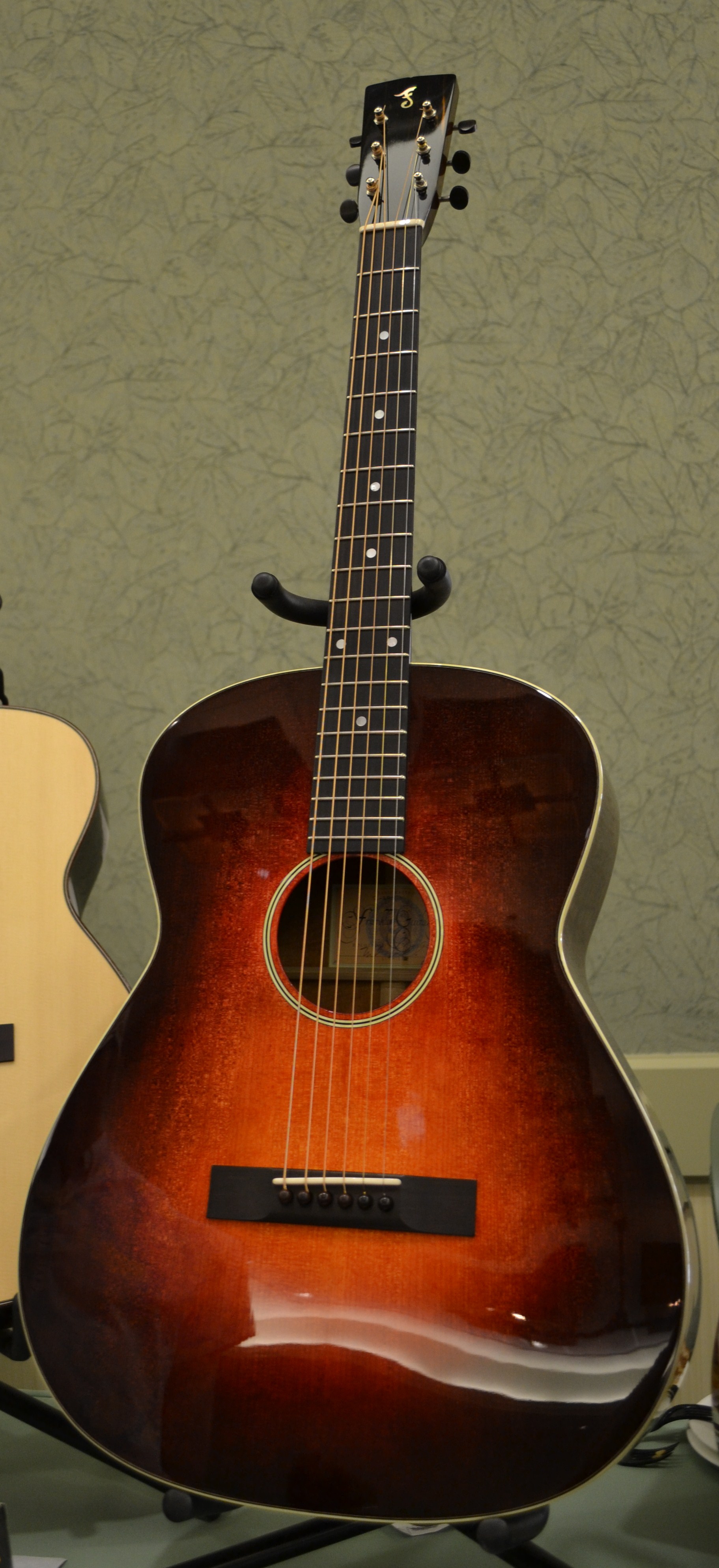
Franklin “Mini Smeck”

